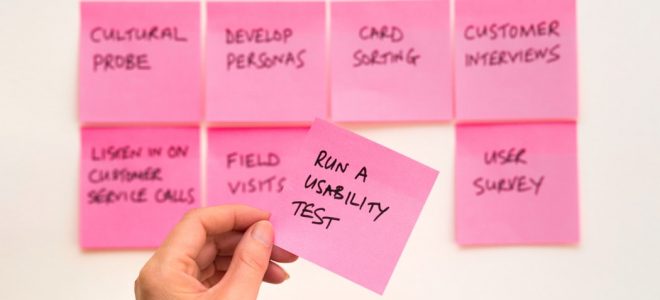
7 Steps to Successful User Experience Testing
User experience testing is an important part of developing and launching a digital product. In fact, it’s one of the most important elements because failure to appropriately navigate user experience testing can lead to many issues, such as serious usability problems. By skillfully navigating the user experience testing process, you can pinpoint opportunities to make improvements or confirm that everything is perfect. Below are seven steps to successful user experience testing.
1. Outline Testing Goals
The first requirement is for you to make sure there is a clear understanding of the testing goals. While it’s obvious that you want to test the product to figure out what works and what doesn’t work, you must be more specific. This includes making sure you know what questions must be answered. Some of the most common questions that should be answered pertain to task time, errors and flow. You should be specific regarding the questions. It’s best to have all of the questions put in writing.
2. Select a Testing Method
There are different user testing methods that can be employed. You’ll need to choose the method that’s best for your product. This might be remote user testing, focus groups, in-depth interviews or A/B testing. Choosing a testing method will often depend on the project phase. When you’re in an early phase, you are likely to choose a different testing method than you would in a later phase. You’ll also need to determine what resources are available, which includes budgetary limits.
3. Recruit Users
Finding the right users will require you to identify the criteria for selection. Generally, you will select users for testing based on your target demographics. This is obviously the best way to make sure the product will appeal to your intended audience. You’ll need to choose about 3 to 5 users that align with the user persona. The demographics that are usually considered include age, gender, education, income, profession, location and technical acumen. It’s sometimes a good idea to select people that are already familiar with the product, but that’s not always the case.
4. Develop Tasks
Development of tasks is important because you have to provide the right amount of information. For instance, you should not explicitly tell users the order in which to engage with the product. Part of the process of figuring out what works and what doesn’t work is allowing users to go through each task intuitively. It’s best to provide a combination of tasks that are goal-specific and open-ended.
5. Recreate Testing Environment
Recreating your testing environment will serve the purpose of eliminating inconsistencies and making sure the results obtained are accurate. Sometimes inconsistencies occur because the person facilitating the test does not provide the same exact instructions to all participants. A faulty testing environment can make the results inaccurate and the user experience test a waste of time to some degree.
6. Interpret Findings
After you have completed all of the steps detailed above, it’s time to collect, analyze and interpret the findings. Your results will indicate what happened during the test, including how many participants you have, issues uncovered and whether the hypothesis was proven. All of your findings will be documented and shared with the teams responsible for development and design.
7. Prioritize Issues
Once you have identified the issues, if any, it’s time to prioritize them and find a solution. After finding solutions to problems that exist, you’ll have to identify the steps that will be taken to resolve them.
User experience testing is not complicated, but it does require keen attention to detail if you’re going to get it right. Each of the steps listed above takes time to complete and if one step is not handled properly, subsequent steps will be problematic.
